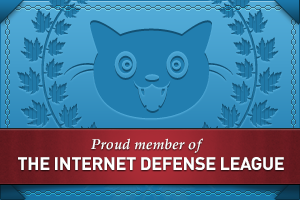Christmas and the end of the year can be a wonderful time, and it can be a festive celebration of meeting friends, family, and even turning strangers into friends.
It can be terribly depressing for some people, and it can be a time of anxiety for many more people. If you’re struggling or know someone who is, then there is help from Mind, Anxiety UK and others. Please check them out.
Sometimes, hidden risks can spoil the day and dangers people didn’t know they had to be anxious about. The Christmas tradition of bringing in certain plants is one of them.

As highlighted by a pet insurance campaign from Money.co.uk, highlights the danger from dogs and cats eating toxic plants. Other pet insurance providers, of course, exist such as Waggel and Petplan, and I’m sure they’re equally aware of the risks.
The 10 most toxic winter plants, at least for dogs and cats, that Money.co.uk focuses on follow, and I was surprised by some of them.
#1: Holly
If the berries or spiked-edge leaves from a holly plant are ingested, this can cause irritation of the mouth, drooling, vomiting and other gastrointestinal upsets, as well as diarrhoea.
Holly may also cause extreme head-shaking if consumed in large quantities.
#2: Mistletoe
Even though varied in types, the mistletoe berries contain chemicals like polysaccharides, alkaloids, and lectins that are harmful to dogs and cats. When ingested in small quantities, it can cause gastrointestinal irritation such as vomiting and abdominal pain. Consumed in large quantities, it may cause abnormal heart rate, low blood pressure and incoordination.
#3: Poinsettia plants
Widely known for their bright red and green foliage, the white sap from the coloured leaves contains a chemical that sometimes causes nausea, vomiting, drooling and diarrhoea, and irritation in the skin, mouth and oesophagus.
#4: Christmas trees
If the Christmas tree pine needles trees are chewed, any oils released may cause irritations in the mouth and stomach upset. Prickly needles can also be hazardous to the mouth, throat and stomach if ingested.
#5: Ivy (Hedera species)
Ivy can cause severe skin irritation if dogs or cats directly contact this plant. If swallowed, ivy can also cause stomach upsets.
#6: Amaryllis
The whole amaryllis plant contains toxic substances, but higher quantities are found in the bulb, so be careful of pets who like to dig.
If any part is swallowed, pets may experience severe gastrointestinal upsets (such as vomiting and abdominal pain), loss of appetite, lethargy and tremors.
#7: Lilies
Unsafe for both cats and dogs, if any part of a lily is swallowed (even in small quantities), this could cause severe gastrointestinal injury, leading to kidney failure for cats.
#8: Laurel
Laurel plants, including bay laurels (often used in cooking) and cherry laurel, contain toxins in all parts of the shrub, which cause vomiting, abdominal pain, hypotension, muscle weakness, and seizures.
#9: Snowdrops
These white flowers include toxins in their stems and leaves, with the highest concentration in the bulb. They can cause abdominal pain, vomiting, incoordination, and a fall in heart rate and blood pressure when ingested.
#10: Yew
This plant (leaves and berries, too) is highly poisonous as they contain taxines. When ingested, they can cause vomiting, weakness, breathing difficulties, and life-threatening change in heart rate and blood pressure in critical cases.
In Pure Spirit
What Christmas safety tips for pets do you have?
Photo credit: Tijana Drndarski.

Join the conversation